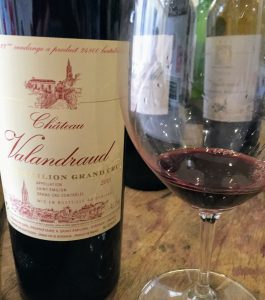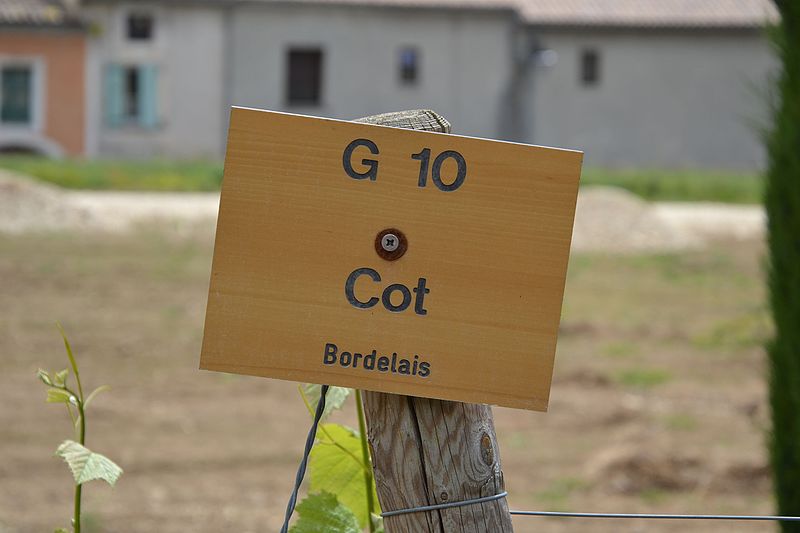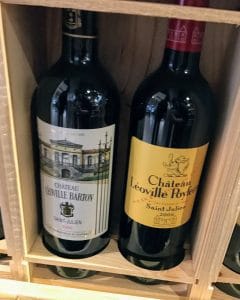
Email offers for the 2017 Bordeaux Futures are starting to flood my inbox so we are going to begin a series examine many of these offers. I’ll start by looking at four offers and sharing my thought process on whether I’m going to buy in on these wines or pass.
But first, let me explain my general approach to the 2017 vintage.
Value & Cellar Defenders
Personally, I don’t approach buying Bordeaux futures as a financial investment where I hopefully “buy low and sell high”. I’m not trying to make money off of these deals. While I may do some wine locker trading with friends down the road, in general, I approach these campaigns with the mindset of buying wines that I expect to drink myself.
Despite the positive spin that merchants and the Bordelais themselves are trying cast on 2017, I’m not convinced that it’s a great year. I think it is certainly better than 2011 and 2013 but this is not a vintage that I’m going to invest heavily in or pay a premium for. Instead, I’m going to be looking for value with prices less than 2016/2015 and more in the range of the 2014 vintage which I feel is the most apt comparison to 2017.
I bought fairly heavily in Bordeaux during the 2015 and 2016 campaigns so I will have a decent amount of great Bordeaux in my cellar that I won’t want to touch for another 10-15 years. As I learned the hard way with many of my 2009/2010 (and even 2005s), the temptation to open these bottles can be very seductive only to have my momentary pleasure give way to pangs of guilt as the wines reveal only a shadow of how good they could have been if only I had given them more time.
Therefore I place value in making sure I have wines that I call “Cellar Defenders”. These are wines from less highly acclaimed vintages that generally reach their peak drinking window earlier than wines from outstanding vintages. Plus with these wines usually having better price points, I can open up these “sacrificial lambs” with far less guilt even if they aren’t quite at their peak.

Wine critics tasting at one of the 2017 en primeur events in Bordeaux.
A Note About Scores
In my breakdown of the wines below I will include the barrel scores from several notable critics as well the Wine Searcher Average of critic scores for previous vintages. As I describe in my post on my own personal approach to scoring, I prefer to rate wines with my wallet and whether or not I think they deliver enough pleasure to merit the cost.
But I’m not going to get a chance to taste these wines anytime soon so I still see some value in using the opinions of professional critics as tools in my decision making on whether I want to invest in buying these wines. I don’t take any one critic’s opinion as gospel truth but rather look for a pattern to see where their opinions tend to overlap.
Now let’s look at some offers.
Ch. Palmer (Margaux)
Brief winery geekery: Third Growth estate owned by 22 shareholders, including the owners of the negociant firms BorieManoux and Sichel. Since 2004, Thomas Duroux has been the winemaker. Their second wine, Alter Ego de Palmer has been produced since 1998 with some critics (like The Wine Cellar Insider’s Jeff Leve) feeling the wine performs at the level of a 4th Growth. In 2017, the vineyards of Palmer were certified 100% Biodynamic. The 2017 is a blend of 54% Merlot, 42% Cabernet Sauvignon and 4% Petit Verdot making it a Merlot dominant Left Bank wine. Between 8,000 to 10,000 cases are produced each vintage.
Critic scores: 97-98 JS (James Suckling), 96-98 WA (Wine Advocate), 94-96 WE (Wine Enthusiast), 92-95 WS (Wine Spectator), 92-95 JD (Jeb Dunnuck), 96 JL (Jeff Leve)
Sample review:
… very deep purple-black in color and leaps from the glass with freshly macerated blue and black fruits: wild blueberries, blackberries and black cherries plus hints of licorice, rose hips, tilled soil and oolong tea with a waft of truffles. Medium-bodied, very finely crafted with exquisitely ripe and smooth yet firm tannins and sporting great mid-palate intensity and wonderful freshness, it finishes long and minerally. — Lisa Perrotti-Brown, Wine Advocate
2017 Wine Searcher Average $273
JJ Buckley $284.95 + shipping (no shipping if picked up at Oakland location)
Vinfolio $279 + shipping
Spectrum Wine Auctions $274.99 + shipping (no shipping if picked up in Tustin, CA)
Total Wine $284.99 (no shipping with all wines sent to a local store and only 50% down upfront)
K & L $279.99 + shipping (no shipping if picked up at K & L locations in California)
Previous vintages:
2016 — Wine Searcher Average $339 Average Critic Score: 94 pts
2015 — Wine Searcher Average $359 Average Critic Score: 96 pts
2014 — Wine Searcher Average $253 Average Critic Score: 94 pts
2013 — Wine Searcher Average $257 Average Critic Score: 92 pts
Buy or Pass?
This one is tempting but ultimately it will be a pass for me. I actually find myself more interested in finding bottles of the 2014 Palmer as I see that vintage performing a similar “cellar defender” role at a little better price point.

This 2011 Valandraud I tasted when I visited the estate back in 2016 was drinking fantastic for something from such an underwhelming vintage like 2011.
This give me optimism that in a much better vintage like 2017 that Valandraud will produce a winner.
Brief winery geekery: Premier Grand Cru Classe founded in 1989 by Jean-Luc Thunevin as one of the first “garage wines”. Vineyards planted to 70 % Merlot, 20% Cabernet Franc, 5% Cabernet Sauvignon with the remaining 5% split between Malbec and Carmenere–making Valandraud one of the few St. Emilion estates to use 5 red Bordeaux grape varieties. Around 3,400 cases produced each vintage.
Critic scores: 95-97 WE, 94-97 JD, 93-96 WS, 94-95 JS, 93-95 WA, 94 JL
Sample review:
Lots of beautiful blueberry and blackberry fruits here. Medium to full body, round and very polished tannins and a flavorful finish. Wet-earth undertones. Velvety mouthfeel at the end. — James Suckling
Wine Searcher Average $141
JJ Buckley $159.94 + shipping
Vinfolio — No offer yet
Spectrum Wine Auctions $144.99 + shipping
Total Wine $149.97
K & L $149.99 + shipping
Previous vintages:
2016 — Wine Searcher Average $179 Average Critic Score: 93 pts
2015 — Wine Searcher Average $167 Average Critic Score: 94 pts
2014 — Wine Searcher Average $141 Average Critic Score: 93 pts
2013 — Wine Searcher Average $141 Average Critic Score: 92 pts
Buy or Pass?
While I’m not going to go crazy, this is a buy for me. Valandraud is one of my favorite Bordeaux estates, regularly producing wines that I would put on par with $200+ Napa Valley wines. It’s worth having a couple bottles in the cellar when I’m craving something bold and luscious but with enough complexity to still remind me it is a Bordeaux.
Brief winery geekery: Grand Cru Classe that is one of the largest and oldest vineyards in St. Emilion with parcels neighboring Ch. Pavie. Since 1999, has been owned by Bernard Magrez who also owns Ch. Pape-Clement with Michel Rolland as a consultant. 2017 vintage is a blend of 93% Merlot and 7% Cabernet Franc. Around 14,000 cases produced each vintage.
Critic scores: 93-95 WE, 92-94 WA, 90-93 WS, 91-92 JS, 90 JL
Sample review:
Offers nice flesh, with a mix of black currant and plum fruit inlaid with subtle black tea, graphite and anise notes. Reveals a tobacco edge on the finish. Well done. — James Molesworth, Wine Spectator
Wine Searcher Average $25
JJ Buckley — No offer yet
Vinfolio — No offer yet
Spectrum Wine Auctions — 6 bottle minimum $149.94 + shipping
Total Wine $28.97
K & L — No offer yet
Previous vintages:
2016 — Wine Searcher Average $28 Average Critic Score: 89 points
2015 — Wine Searcher Average $33 Average Critic Score: 90 points
2014 — Wine Searcher Average $35 Average Critic Score: 90 points
2013 — Wine Searcher Average $29 Average Critic Score: 88 points
Buy or Pass?
This is a definite buy for me and pretty much exemplifies the value that I’m looking for in 2017. The Magrez/Rolland style tends to favor early drinkability with “New World-ish” fleshy fruit. These are wines that I expect to be drinking fine 5-10 years from vintage date, making them perfect cellar defenders to help protect my 2015/2016 from being opened too soon.

Brief winery geekery: 5th growth estate that was previously owned by the Borie family of Ducru Beaucaillou fame and managed by Francois Xavier Borie (who also owns Grand Puy Lacoste). In 2017, the estate was sold to the Cazes family (of Lynch-Bages fame). The vineyard is currently planted to 61% Cabernet Sauvignon, 36% Merlot and 3% Cabernet Franc with the Cazes family planning on decreasing the amount of Cabernet planted and increasing the amount of Merlot. Vineyards divided among two parcels with one neighboring Ch. Latour and the other Lynch-Bages. Around 9000 cases a year produced.
Critic scores: 94-95 JS, 89-92 WS, 94 JL
Sample review:
With a good depth of color, the wine shows a nice purity of juicy cassis while a leafy olive and pepper component keeps you interested throughout this full bodied, crunchy and classic experience. The tannins are a bit uncompromising right now but give the wine time, and it will prove to be worth the wait. This is the debut vintage from the new owners, the Cazes family. — Jeff Leve The Wine Cellar Insider
Wine Searcher Average $61
JJ Buckley — No offer yet
Vinfolio — No offer yet
Spectrum Wine Auctions $64.99 + shipping
Total Wine $64.97
K & L — No offer yet
Previous vintages:
2016 — Wine Searcher Average $57 Average Critic Score: NA
2015 — Wine Searcher Average $51 Average Critic Score: 92 points
2014 — Wine Searcher Average $44 Average Critic Score: 91 points
2013 — Wine Searcher Average $41 Average Critic Score: 89 points
Buy or Pass?
This is going to be a pass for me. Definitely not a compelling value compared to previous vintages. While I’m a huge fan of the Cazes family and can anticipate exciting things in the future for Haut-Batailley, I think it will be a few years before we really see their influence in the wine. I don’t see a reason to pay a premium over the $51 average that the 2015 vintage has just on the potential of the Cazes family’s involvement.
More Posts About the 2017 Bordeaux Futures Campaign
*Bordeaux Futures 2017 — Langoa Barton, La Lagune, Barde-Haut, Branaire-Ducru
*Bordeaux Futures 2017 — Pape Clément, Ormes de Pez, Marquis d’Alesme, Malartic-Lagraviere
*Bordeaux Futures 2017 — Lynch-Bages, d’Armailhac, Clerc-Milon and Duhart-Milon
*Bordeaux Futures 2017 — Clos de l’Oratoire, Monbousquet, Quinault l’Enclos, Fonplegade
*Bordeaux Futures 2017 — Cos d’Estournel, Les Pagodes des Cos, Phélan Ségur, Calon-Segur
*Bordeaux Futures 2017 — Clinet, Clos L’Eglise, L’Evangile, Nenin
*Bordeaux Futures 2017 — Malescot-St.-Exupéry, Prieuré-Lichine, Lascombes, Cantenac-Brown
*Bordeaux Futures 2017 — Beychevelle, Talbot, Clos du Marquis, Gloria
*Bordeaux Futures 2017 — Beau-Séjour Bécot, Canon-la-Gaffelière, Canon, La Dominique
*Bordeaux Futures 2017 — Vieux Chateau Certan, La Conseillante, La Violette, L’Eglise Clinet
*Bordeaux Futures 2017 — Montrose, La Dame de Montrose, Cantemerle, d’Aiguilhe
*Bordeaux Futures 2017 — Clos Fourtet, Larcis Ducasse, Pavie Macquin, Beauséjour Duffau-Lagarrosse
*Bordeaux Futures 2017 — Kirwan, d’Issan, Brane-Cantenac, Giscours

 Continuing our celebration of the oddly named
Continuing our celebration of the oddly named 


 Going to need more than
Going to need more than 




